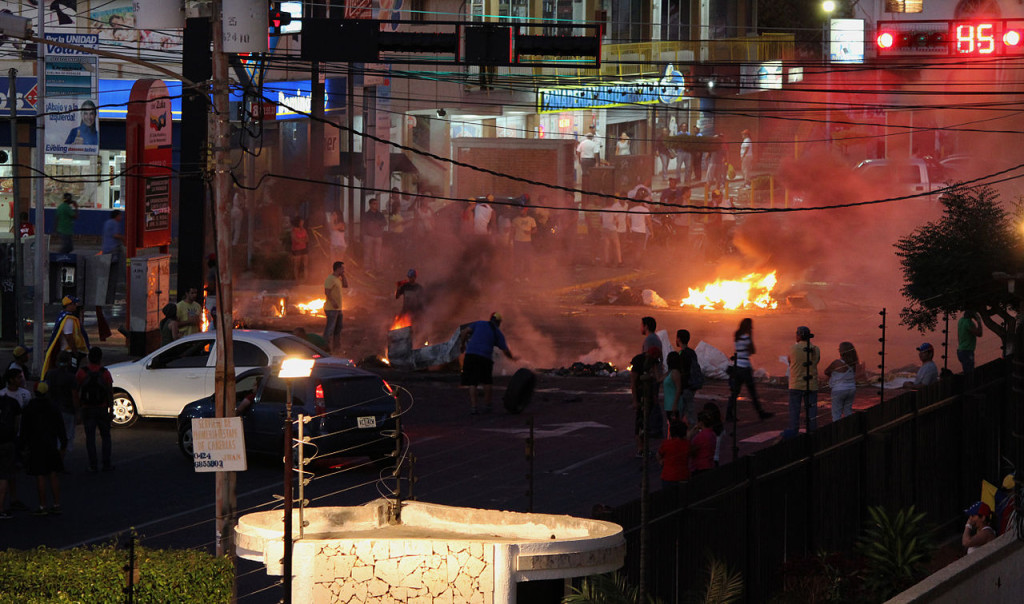
Protests in Maracaibo city (Wikipedia)
Venezuela has been rocked by protests against Nicolas Maduro’s government for more than two weeks, with at least thirteen killed and the government deploying fighter jets and military forces.
Venezuelans are protesting a number of things, including skyrocketing crime (especially murders) and government indifference. But the protesters consistently list price inflation and the scarcity of essential goods as primary reasons for their discontent. The inflation rate in 2013 was 56% across the entire economy, and items like milk, sugar, and toilet paper cannot be found on store shelves.
However, Venezuela has historically had very high inflation of at least 20% annually, and this hasn’t sparked the protests we’re seeing now.
It turns out that the situation also varies greatly in different sectors of the economy: prices in 2013 rose 76% for food, but only 14% for housing. So can a more detailed look at price inflation help explain what’s happening in Venezuela, and why it’s seeing the worst protests since Hugo Chávez passed away in March?
To dig deeper, we’ve taken consumer price index data from Venezuela’s National Statistics Institute to better visualize what’s driving these protests, and how much worse things have gotten in the past year. Click the labels to show and hide categories, and click the lines to see details:
This next chart shows how dramatically Venezuelan purchasing power has been vanishing: look at what’s happened to a price tag of 10 VEF (Venezuelan bolívares) in various categories since December 2007:
Source code on Github. Powered by highcharts.js.
•
 Jonathan Giuffrida is a senior editor at The Brooklyn Quarterly and a masters student at the University of Chicago.
Jonathan Giuffrida is a senior editor at The Brooklyn Quarterly and a masters student at the University of Chicago.
